Importance of Technology on 21st Century Education
Technology reshapes education in the 21st century. Tools like laptops and tablets open doors to vast knowledge. They also foster new learning methods that engage students more deeply than traditional lectures might.
With these tools, the classroom extends beyond four walls, allowing study anywhere at any time a true revolution for how educators teach and learners absorb information. As such resources become standard, they ensure teaching stays relevant in our fast-moving digital age.
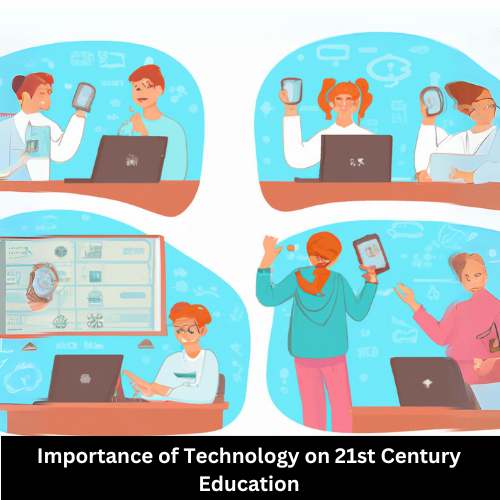
Read More: Importance of technology in education
Redefining Learning Paradigms
Today’s schools are shifting how they teach. Tech changes what we learn and the way we do it. Books once led learning, but now screens take that role more often.
This shift shapes our minds differently. In class, a teacher would talk while students sat quiet; tech makes this old method less common. Now students can watch lessons on their laptops or phones anytime, not just at school.
This change means teachers need to update skills too so they can guide young minds in using these new tools well for learning things better and thinking sharp skills crucial for tomorrow’s world.
Read More : Why technology is important in education?
Personalized Educational Experiences
In today’s schools, digital tools are transforming how teachers craft lessons and ignite student interest. With these technologies, classes become dynamic spaces where kids explore new ideas together. Tools like virtual reality or robots can break down walls, creating a setting ripe for teamwork and curiosity.
Teachers now have data at their fingertips to tailor learning to each child’s needs a practice known as personalized education. Personalized learning recognizes that every student is different; therefore it customizes teaching approaches based on individual abilities and interests. While tech in classrooms promises more tailored experiences for learners leading to better grades as reported by 59% of middle schooners it also brings challenges such as ensuring equal access for all students regardless of background or home resources.
Despite the impressive potential of educational technology evidenced by its anticipated market growth to an astounding $342 billion within three years only a fraction of classrooms currently enjoy cutting-edge resources like augmented reality or AI-driven analyses. Educators face hurdles in proper implementation: striking balance with screen time, mastering effective integration into curricula without over-reliance on gadgets themselves the tool must remain just that a means rather than the end goal.
Expanding Access to Resources
Technology in education opens doors to vast resources. It lets students dive into subjects, helps them do research online, and get more than what’s just in books. Teachers can now find free lesson plans and videos that match their lessons thanks to OER platforms.
Smart tools like Explorance MLY take student feedback the good stuff they type out themselves and figures out key points using AI. This means schools learn what works straight from those who matter most: the students. Classes aren’t stuck inside four walls anymore either.
A virtual tour of Grand Canyon? Technology brings lessons alive by connecting kids with real places or experts without leaving class, making learning feel relevant. And let’s not forget jobs; today’s learners need tech skills for tomorrow’s workspaces.
When schools use new technology daily, it makes sure young people are ready for future careers right after graduating.
Fostering Global Collaboration
Educators can now harness digital media to connect students globally, far beyond past tech uses like word processing. The ARRA has funded classroom technology advancement and teaching skill growth. This leap allows for rich global interaction within education through diverse strategies.
Students learn to find, analyze, comprehend international news in various languages and formats; crucial skills as we foster worldwide understanding across differing perspectives. Digital creations by individuals around the planet blogs, videos, podcasts provide authentic insights into numerous cultures. Programs such as Asia Society’s initiative enable youth from different backgrounds to share stories digitally, promoting deeper cultural comprehension through collaborative projects showcased online.
Global sites for young people facilitate connections. These platforms allow free exchange of opinions among international peers, fostering collective intelligence and collaborative solutions to world matters from diverse cultural perspectives.
Supporting Diverse Learning Styles
Tech tools in schools let teachers meet many learning needs. Kids learn in unique ways: some by doing, others by hearing or seeing lessons, and a few prefer working alone. Smart use of apps and online platforms give each child ways to grasp new ideas how they like best.
Tools such as videos cater to visual learners while audiobooks can help those who understand better through listening. Tech also helps kids progress at their own pace with interactive challenges that adjust difficulty based on the user’s skills this is key for keeping all students engaged, no matter their starting level or speed of learning.
Encouraging Interactive Engagement
Tech in classrooms sparks life into lessons. It turns a dull lecture on math or reading into an adventure. Think of students using virtual reality to explore the human body, making tough concepts easier to grasp and far more thrilling than textbooks alone could ever offer.
Teachers now have new ways to track how kids do day by day, with every click revealing what each student needs most. By embracing tools like robots or augmented reality, schools cut costs and teachers save time; but that’s just part of it. Kids team up across continents via videos for projects bursting with creativity all while they’re picking up skills vital for today’s world.
Enhancing Teacher Productivity
Tech tools in the classroom give teachers more ways to help students. They add to books and papers, letting educators match various learning styles. With tech, each student can grasp what’s taught through videos or games at their own speed.
Updated online content means you get new info fast. A 2019 OECD survey says those using devices for over an hour weekly do best in homework across reading, math, and science subjects. Also, learners score higher when both they and teachers use tech during lessons.
Moreover, after teaching from home due to lockdowns – many teachers see EdTech more favorably now than before; a finding consistent with studies showing that significant percentages of education professionals have warmed up towards technology post-pandemic school closures.
Innovative Assessment Methods
Innovative assessment methods are shaping modern education. Tech tools now play a big role in how students get tested. These digital ways let us test anytime and blend smoothly with learning itself, making it easier to spot what helps each student learn best.
One key method is dynamic assessment which boosts learning by tracking progress in real-time [4]. E-assessments can range from full systems to simple apps or websites tailored for class goals [5,6]. Students take part more they even rate their own work sometimes (that’s called peer assessment).
With such tech like e-portfolios tracking skills over time becomes simpler too.
Secure and Efficient Administration
In today’s schools, secure and efficient administration hinges on technology. Schools handle academic tasks like exams with computer-based systems. Special programs allow virtual lessons, even for practical skills.
Students get ready for big tests or job interviews online now. Tech gets used more every day in teaching tools too. New software comes out often to help this process; older ones update regularly too.
For talking between teachers and families about a student’s progress or needs, they rely on digital platforms now instead of just meetings in person much easier that way. All these tech changes make running schools better and keeping everyone connected smooth as can be.
Preparing for Future Careers
Education today embraces technology, equipping students with skills for their future careers. Long gone are days when learning was confined to traditional methods; modern classrooms integrate tech tools that foster creativity and problem-solving. With a shift towards remote work, understanding digital platforms becomes essential across professions.
Tech in schools offers variety in learning approaches, meeting diverse needs efficiently. Games keep young minds engaged while teaching complex lessons interactively skills vital as they progress into adulthood where collaboration via virtual means is commonplace. In essence, integrating technology prepares learners not just academically but also for the evolving demands of tomorrow’s workplace.
Bridging the Digital Divide
The digital divide is a real challenge. It keeps some kids from learning after the school bell rings. They can’t get online at home like others can.
This gap, called the “homework gap,” hits hard in areas with less money and fewer resources. Big efforts have been made to fix this problem over years past almost $86 billion spent by government and private groups together since 1994! Schools got more tech tools and teachers learned new skills through programs like ConnectED started in 2013 under President Obama’s lead.
But high-speed internet isn’t everywhere it’s spotty outside of schools too; so even if students learn using tablets during class thanks to corporate help, what happens when they step into their neighborhoods where broadband access drops off? In Marion, Alabama, and Phoenix, Arizona the places I studied they’ve felt these issues firsthand despite receiving aid from initiatives such as Apple partnering with ConnectED. Now we must think bigger: How do we link up not just our schools but also local libraries or small business spots that still lack fast net connections?
That way all members within communities could truly share in educational gains technology brings.
Technology reshapes 21st-century education. It bridges gaps, connecting students with a world of information at their fingertips. Interactive tools and digital platforms make learning dynamic, catering to diverse needs.
Skills for tomorrow’s jobs are honed through tech-based teaching methods, fostering critical thinking and problem-solving abilities in young minds. As educators harness technology’s power, they tailor lessons that engage and inspire learners from all backgrounds preparing them for a future where adaptability is key.
Importance of Technology on 21st Century Education Slides
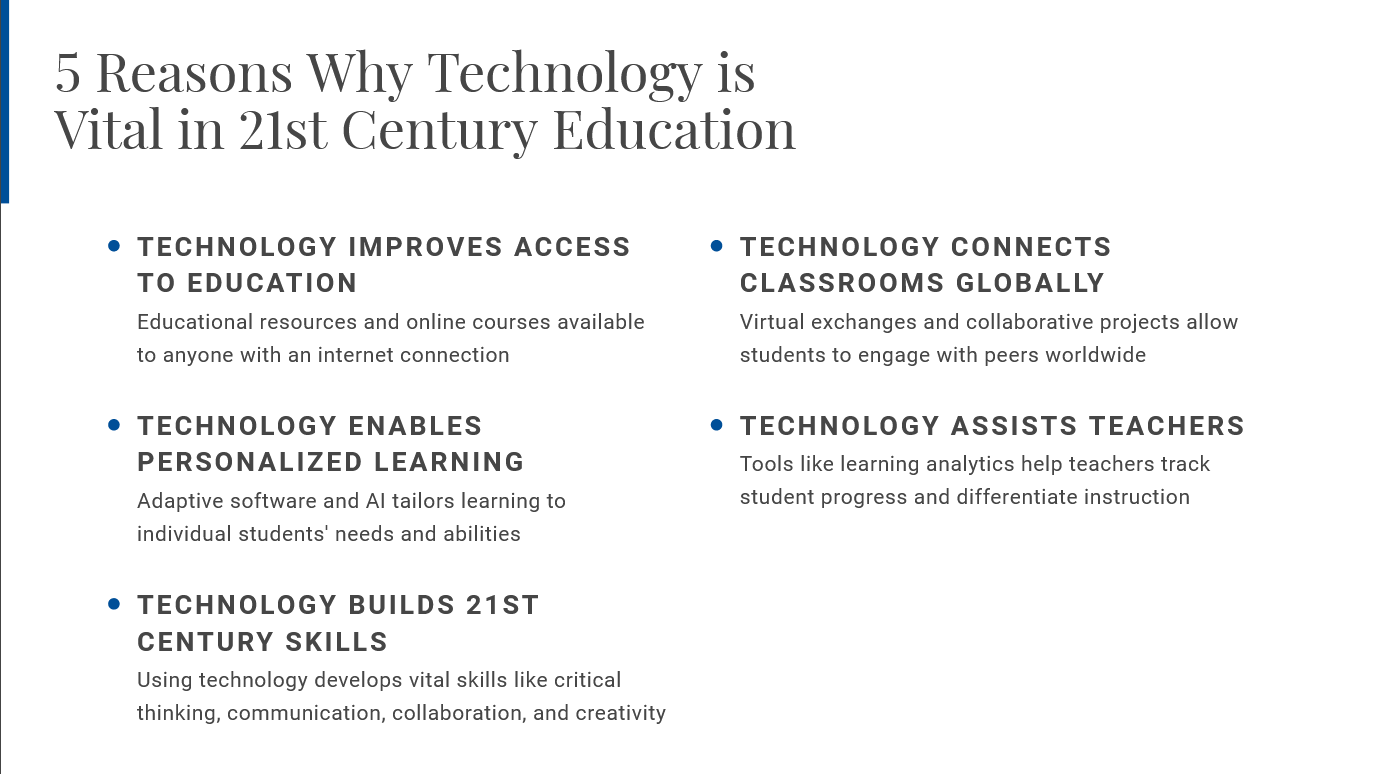
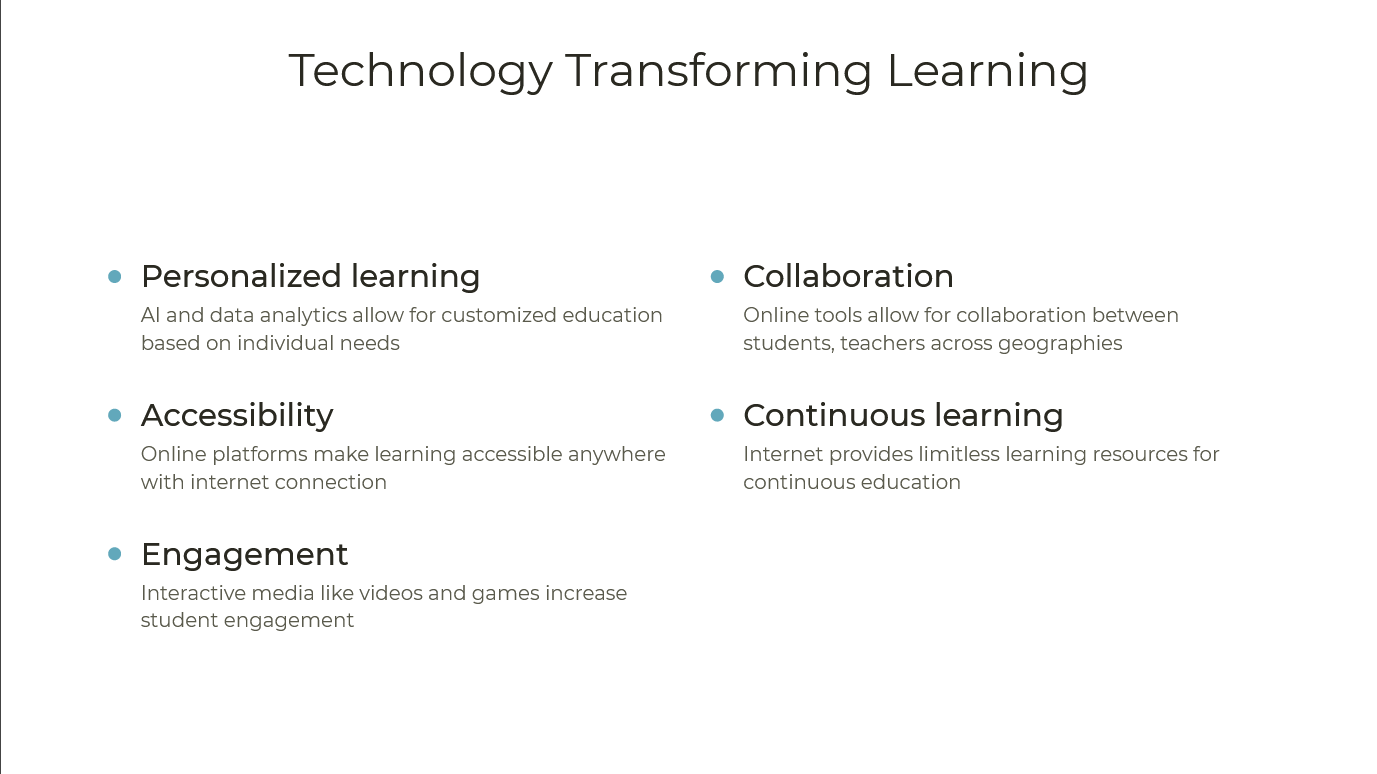
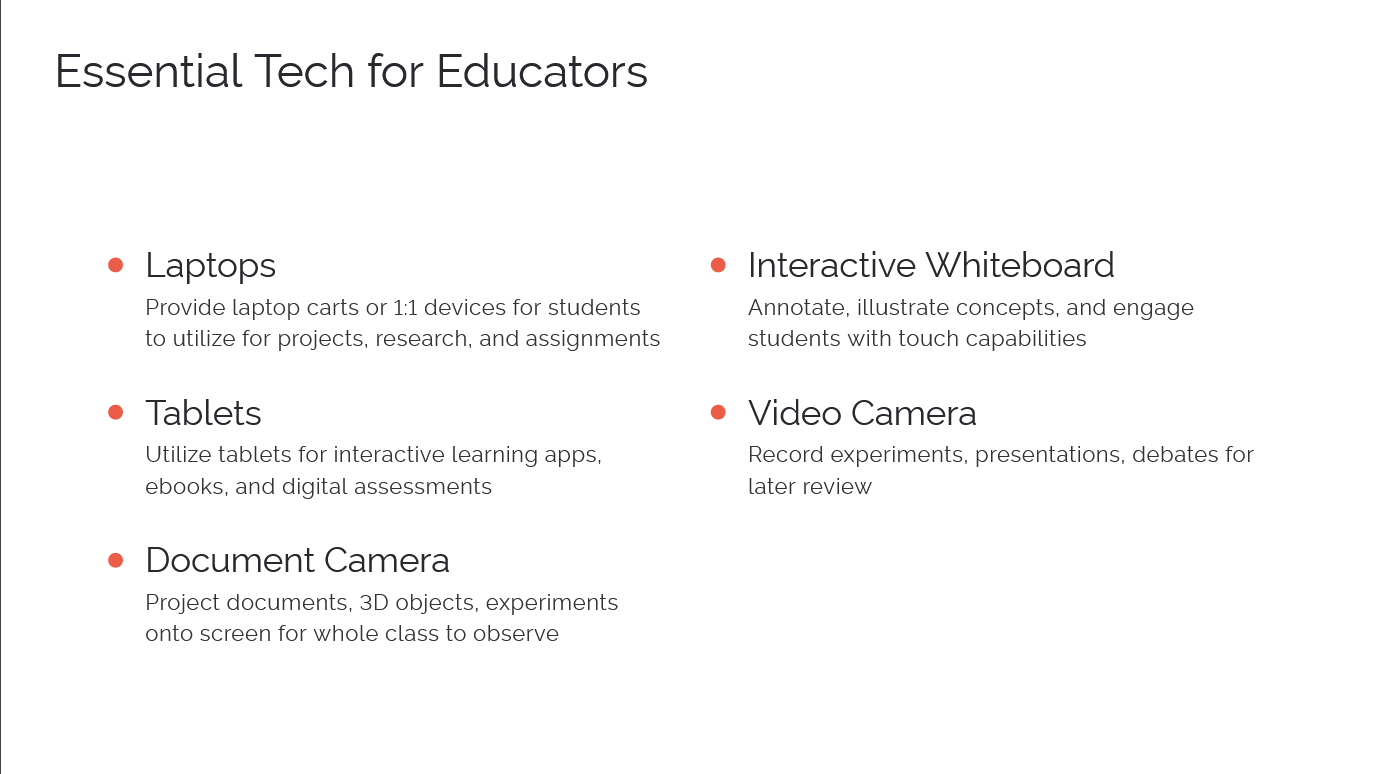
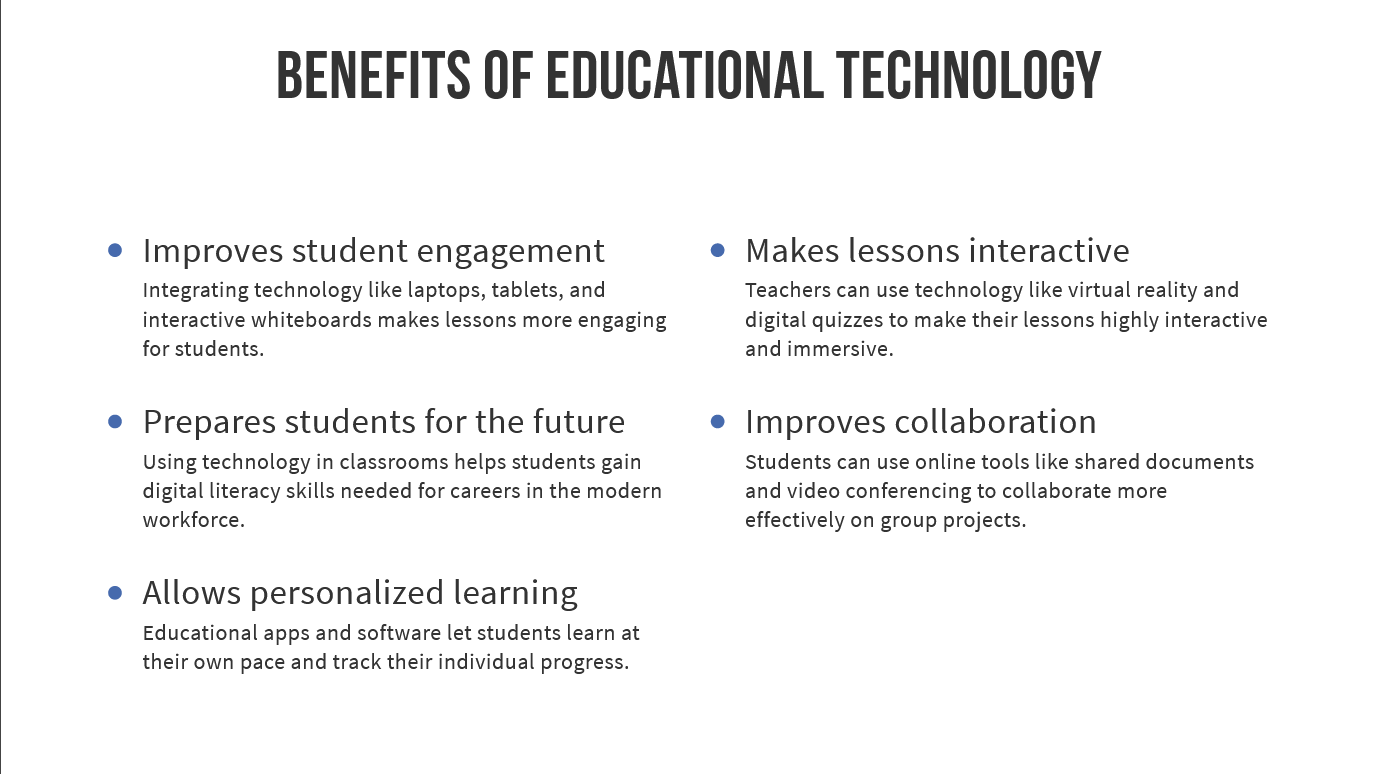
References:
https://tech.ed.gov/files/2017/01/NETP17.pdf
https://www.edsurge.com/news/2023-04-03-the-role-of-technology-in-personalized-learning
https://www.goguardian.com/blog/equitable-access-to-technology
https://asiasociety.org/education/five-ways-use-technology-and-digital-media-global-learning
https://go.gale.com/ps/i.do?id=GALE%7CA211366091&sid=googleScholar&v=2.1&it=r&linkaccess=abs&issn=15481093&p=AONE&sw=w
https://soeonline.american.edu/blog/technology-in-education/
https://www.concordia.edu/blog/3-reasons-why-teachers-need-technology-in-the-classroom.html
https://www.mdpi.com/2227-7102/13/5/522
https://medium.com/overviews-reviews-and-advances-in-statistical/21st-century-technology-for-educational-system-communication-6f722722315a
https://www.goguardian.com/blog/how-does-technology-prepare-students-for-the-future